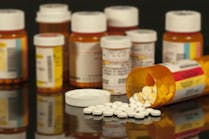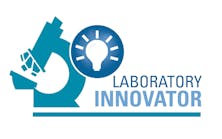Inflammatory bowel disease (IBD) is a chronic disease that causes inflammation of the gastrointestinal (GI) tract. It is thought that IBD results from genetic, environmental, and immune regulatory factors.1 The major forms of IBD are Crohn’s disease and ulcerative colitis. While Crohn’s disease can affect the GI tract at any point from mouth to rectum, ulcerative colitis is limited to only the colon. Ulcerative colitis usually includes mucosal inflammation and extends proximally from the rectum. Crohn’s disease, on the other hand, can involve any site of the GI tract, but involvement of the distal ileum and colon is most common (Table 1). The inflammation in ulcerative colitis is continuous, while the inflammation in Crohn’s disease is often patchy. Furthermore, patients with Crohn’s disease can develop strictures (narrowings in the bowel), fistulas (abnormal connections between two pieces of bowel or between the bowel and skin), or perianal abscesses. Extra-intestinal manifestations of IBD, in particular in Crohn’s disease, can affect various organs such as skin, joints, eyes, and mouth.2
Table 1. Comparison of location and conditions in ulcerative colitis vs. Crohn’s disease
It is postulated that dysregulation of the complex mechanisms that are responsible for mucosal immunity results in IBD. Furthermore, the dynamic balance between commensal flora and host defensive responses at the mucosa play a pivotal role in the initiation of IBD. An imbalance between protective and harmful bacteria, also called dysbiosis, is, for the most part, responsible for the rising incidence of IBD. This imbalance causes the deregulated mucosal immune response to antigens of enteric bacteria which eventually cause mucosal inflammation of the GI tract and extra-intestinal symptoms.3,4
It is believed that IBD pathogenesis has a genetic component as well. IBD susceptible genes such as NOD2(CARD15) and NOD1(CARD4) have been identified and can serve as genetic markers for IBD. It has been shown that some patients with Crohn’s disease have a homozygous mutation in the gene that encodes a protein known as NOD2. NOD2 is an intracellular sensor of a component of peptidoglycan in the cell wall of bacteria. Recent studies show that NOD2 mutations in mice can lead to mucosal inflammation. Additionally, intestinal epithelial cells from individuals with mutations in NOD2 have diminished secretion of antimicrobial peptides when exposed to invasive bacteria. Furthermore, these findings demonstrate that IBD is the result of an abnormal immune response to certain antigens in the intestinal microflora.5-7
Furthermore, IBD can pose a major risk for the development of neoplasia leading to colorectal cancer, meaning that chronic inflammation causes an increased risk of malignancy.6,8
Abdominal pain, cramps, blood in the stool, or bouts of diarrhea are the major reasons that IBD patients initially seek medical attention. Diagnosis of IBD is based on a combination of clinical symptoms and physical examination, imaging results, and laboratory tests. Endoscopy and radiologic examinations are the two main imaging methods that are used for IBD diagnosis.
Endoscopy and radiologic examinations in IBD
Patients with abdominal pain and suspicion of IBD are referred by primary care physicians to gastroenterologists.9 Endoscopy along with radiographic and imaging studies are used to differentiate ulcerative colitis from Crohn’s disease. Endoscopic examination shows that inflammation in ulcerative colitis is limited to the colon and rectum. Currently, endoscopy is regarded as the gold standard for determining the mucosal inflammation and disease activity in Crohn’s disease. In Crohn’s disease, inflammation can be found anywhere in the GI tract, although mostly it is found in the colon and small intestine.4 Endoscopic findings reveal the character and continuity of the inflamed tissue as well. In ulcerative colitis, inflammation is superficial and continuous, while inflammation in Crohn’s disease is discontinuous and patchy, with possible narrowing of the lumen (Table 1).
Video capsule endoscopy (a swallowed pill camera) can be used to look for small bowel ulcers in patients with Crohn’s disease.10 Radiographic double-contrast barium swallow with gas can demonstrate luminal narrowing, as seen as a “string sign” in the terminal ileum characteristic of Crohn’s disease, while in ulcerative colitis a barium enema may delineate the extent of the disease in the colon.5 In addition, in IBD patients, surveillance colonoscopy is seen as the gold standard in the diagnosis of intraepithelial neoplasia and cancer.8
Computerized tomography (CT) and magnetic resonance imaging (MRI) are the radiologic techniques used in the United States to support the differential diagnosis of IBD. Imaging of Crohn’s disease traditionally has been based on barium studies and CT procedure. The role of CT in patients with IBD is best reserved for patients who cannot undergo standard endoscopic evaluations.11 MRI, however, in recent years has been used more often as an imaging method for the diagnosis of Crohn’s disease. Lack of ionizing radiation and superior tissue contrast resolution are advantages of MRI.12
Histologic examination for IBD diagnosis
Biopsy sampling during endoscopy, followed by histologic examination, help in the diagnosis of IBD. However, no histologic feature strictly distinguishes the two forms of IBD. Microscopic examinations reveal the presence of polymorphonuclear cells, as an indication of acute inflammation, while infiltration of lamina propria with macrophages, plasma cells, and lymphoctyes indicates chronic inflammation. Histopathological features characteristic of ulcerative colitis show confluent inflammatory cellular infiltration closest to the epithelial surface. On the other hand, in Crohn’s disease, patchy, deep and focal inflammatory cell infiltrates and macrophages are observed that often form noncaseating granulomas containing giant cells.5
Diagnostic tests are also ordered to detect IBD and evaluate its severity. Such tests assess the prognosis and help determine needed therapy. The following will elucidate the diagnostic workup and utility of such tests for IBD.
Serology/immunology and hematology tests for IBD diagnosis
Certain serology tests, such as serum C reactive protein (CRP), can be used to a degree to predict IBD relapses. CRP is an acute phase protein and is used in serology as a common marker for inflammation. Acute phase proteins are synthesized and secreted by the liver in response to cytokines during inflammatory processes.6
CRP levels may aid in determining which patients will progress to colectomy.10 Increases in the CRP levels can indicate active inflammation, even when a patient is feeling well. However, a subset of patients maintain normal CRP levels despite inflammation.
In addition to the CRP test, other classical disease markers include erythrocyte sedimentation rate (ESR) and complete blood count (CBC). Increased CRP, elevated ESR, and increased white blood cell and platelet counts are often indicative of inflammation. If anemia is present, as in iron deficiency anemia, decreased hemoglobin values and decreased mean corpuscular volume (MCV) are also observed.5,13
Recently, detection of autoantibodies and certain serologic markers have been attempted in the differential diagnosis of IBD. Various laboratory techniques such as direct or indirect immunofluorescence and enzyme-linked immunosorbent assay (ELISA) are used in clinical diagnostic laboratories to assess the autoantibody titers. Detection of autoantibodies such as IgG pericytoplasmic antineutrophil cytoplasmic antibodies (p-ANCAs) can have utility in the diagnosis of IBD. For example, 70% of patients with ulcerative colitis have high titer antibodies to p-ANCA. Antibodies to p-ANCA can be seen in patients with Crohn’s disease as well (20% of patients with Crohn’s disease have low titers to p-ANCAs). Many patients with Crohn’s disease have high titer antibodies to anti-Saccharomyces cervisiae (ASCA) and anti-outer membrane protein C (OmpC) even though antibodies to ASCA and OmpC can be seen to a lesser extent in ulcerative colitis as well.5
Recently discovered autoantibodies such as pancreatic autoantibodies (PAB) are specific for Crohn’s disease while goblet cell autoantibodies (GAB) have shown specificity for ulcerative colitis. PAB and GAB, however, have both shown low sensitivity.14 It has been suggested that detection of a combination of the above mentioned autoantibodies will improve the testing sensitivity and better support diagnosis of IBD15 (Table 2).
Table 2. Serology/hematology tests/markers used for the diagnosis of IBD
Diagnostic tests for anemia in IBD
Anemia is a systemic manifestation of IBD and could be considered the most common systemic complication of acute IBD. Anemia is a complex condition and is multifactorial in origin in IBD patients; it can be chronic or a recurring problem.16 Iron deficiency anemia and anemia of chronic disease are the main types of anemia in IBD.17 Malabsorption caused by impaired absorption of folate and/or vitamin B12, malnutrition, inflammation, drug effects, or intestinal resection all may contribute to anemia in IBD patients. Furthermore, iron deficiency anemia in IBD patients can result from intestinal bleeding, malabsorption, and dietary restriction.16
Diagnosis of anemia in IBD patients requires a specific approach. Laboratory tests used for the determination of anemia in IBD patients include hemoglobin concentration, red cell count, red cell indices such as red cell distribution width and percentage of hypochromic red blood cells, and reticulocyte counts.17,18 Blood tests for determining iron deficiency anemia are among the panel of tests that are ordered for IBD patients. In addition, laboratory markers of iron status such as serum iron, percent transferrin saturation, concentration of ferritin, and total iron binding capacity are ordered to differentiate between anemia of chronic disease and iron deficiency anemia.18 Ferritin levels, as a marker of iron storage, are normal or increased in anemia of chronic disease, while the levels of ferritin are decreased in iron deficiency anemia.19 Determination of anemia, however, is at times difficult because of coexistent inflammation.
Fecal and microscopic tests
Stool specimens generally are tested in the clinical diagnostic laboratory for culture and microscopic examination. The presence of white blood cells in the microscopic examination is an indication that inflammation is present.5 Fecal markers are biomarkers that can be used for additional screening in the diagnosis, prognosis, and management of IBD. Tests for fecal markers are non-invasive tests and can be used as additional screening tests for inflammation. Fecal markers either are generated or leaked from the inflamed intestinal mucosa. Tests for fecal markers include evaluation of calprotectin, lactoferrin, and α-1anti-trypsin levels.4,9 For example, elevated calprotectin levels indicate increased risk of disease relapse in patients in clinical remission and correlate with endoscopic disease activity.20
Cytokines and IBD
A host of cytokines such as TNF-α, IL-6, and IL-23 have been shown to be upregulated in both Crohn’s disease and ulcerative colitis. On the other hand, anti-inflammatory cytokines such as TGF-ss facilitate repair of mucosal injury in IBD. Furthermore, dysregulation of balance between Th17 cells, which are subsets of effector T cells, and T regulatory subsets can lead to the development of IBD.21 Decreased levels of TGF-ss have been shown to be related to the development of autoimmune disorders including IBD.22,23 It has been postulated that controlling the activity of cytokines IL-23 and IL-17 can lead to novel therapeutic interventions.24 Neutralization of proinflammatory cytokines leads to reduction in inflammation in IBD. In fact, several agents such as anti-TNF-α agents are currently in use for the treatment of ulcerative colitis and Crohn’s disease.25 Therefore, identification of cytokines in blood plasma and in the mucosal tissue, performed routinely by ELISA, could be used for the prognosis and assessment of disease activity in IBD patients.26-28
Future research trends
Various disease markers are under investigation for the diagnosis of IBD. Detection of novel autoantibodies can have utility for the differential diagnosis of IBD. Autoantibodies to zymogen granule glycoprotein 2 (GP2) have shown specificity for Crohn’s disease and could improve the serological diagnosis of IBD. 29
Two hormones, hepcidin and prohepcidin, may play a significant role in the development of IBD. Levels of serum hepcidin and prohepcidin are significantly altered in IBD patients, and have been found to correlate well with ferritin and disease activity. Therefore, measurement of serum hepcidin and prohepcidin could be useful additional indicators to monitor disease progress in IBD patients.30 The soluble transferrin receptor is increased in iron deficiency anemia and nearly unchanged in anemia of chronic disease. Use of the soluble transferrin receptor could be useful to differentiate between these two types of anemia in IBD patients as well.19
Levels of cytokines can be used in the future to predict and monitor IBD status. Plasma levels of interleukin-18, for example, have been shown to be strongly associated with ulcerative colitis activity, as evaluated through clinical and endoscopic scoring systems and CRP levels.25,31
Summary
IBD consists of ulcerative colitis and Crohn’s disease and is characterized by recurrent and chronic inflammation of intestinal mucosa. In addition to patient’s symptoms, history and physical examination, various techniques and tests help diagnose IBD. Endoscopy, histology, and imaging techniques such as CT-scan or MRI are used along with serological and hematological lab tests for its diagnosis. The likelihood of these procedures distinguishing between the diagnosis of ulcerative colitis or Crohn’s disease is high. Various investigations are underway for better identification and management of IBD in the future.
References
- Xavier RJ, Podolsky DK. Unraveling the pathogenesis of inflammatory bowel disease. Nature. 2007;448(7):427-434.
- Veloso FT. Extraintestinal manifestations of inflammatory bowel disease: do they influence treatment and outcome? World J Gastroenterol. 2011;17(22):2702-2707.
- Kaur N, Chen C, Luther J, Kao JY. Intestinal dysbiosis in inflammatory bowel disease. Gut Microbes. 2011;2(4):211-216.
- Minderhoud IM, Samsom M, Oldenburg B. What predicts mucosal inflammation in Crohn’s disease patients? Inflamm Bowel Dis. 2007;13(12):1567-1572.
- Strober W, Gottesman S. Immunology, Clinical Case Studies and Disease Pathophysiology. Hoboken, NJ: Wiley-Blackwell; 2009.
- Geha R, Notarangelo L. Case Studies in Immunology, a Clinical Companion. 6th ed. New York, NY: Garland Science; 2012.
- Henckaerts L, Figueroa C, Vermeire S, Sans M. The role of genetics in inflammatory bowel disease. Curr Drug Targets. 2008;9(5):361-368.
- Neumann H, Vieth M, Langner C, Neurath MF, Mudter J. Cancer risk in IBD: how to diagnose and how to manage DALM and ALM. World J Gastroenterol. 2011;17(27):3184-3191.
- Wong A, Bass D. Laboratory evaluation of inflammatory bowel disease. Curr Opin Pediatr. 2008;20(5):566-570.
- Moscandrew ME, Loftus EV Jr. Diagnostic advances in inflammatory bowel disease (imaging and laboratory). Curr Gastroenterol Rep. 2009;(6):488-495.
- Bruining DH, Loftus EV Jr. Technology Insight: new techniques for imaging the gut in patients with IBD. Nat Clin Pract Gastroenterol Hepatol. 2008;5(3):154-161.
- Sinha R, Murphy P, Hawker P, et al. Role of MRI in Crohn’s disease. Clin Radiol. 2009;64(4):341-352.
- Cabrera-Abreu JC, Davies P, Matek Z, Murphy MS. Performance of blood tests in diagnosis of inflammatory bowel disease in a specialist clinic. Arch Dis Child. 2004;89(1):69-71.
- Lawrance IC, Hall A, Leong R, Pearce C, Murray K. A comparative study of goblet cell and pancreatic exocrine autoantibodies combined with ASCA and pANCA in Chinese and Caucasian patients with IBD. Inflamm Bowel Dis. 2005;11(10):890-897.
- Desplat-Jégo S, Johanet C, Escande A, et al. Update on Anti-Saccharomyces cerevisiae antibodies, anti-nuclear associated anti-neutrophil antibodies and antibodies to exocrine pancreas detected by indirect immunofluorescence as biomarkers in chronic inflammatory bowel diseases: results of a multicenter study. World J Gastroenterol. 2007;13(16):2312-2318.
- Gomoll’on F, Gisbert JP. Anemia and inflammatory bowel diseases. World J Gastroenterol. 2009;15(37):4659-4665.
- Oustamanolakis P, Koutroubakis IE, Kouroumalis EA. Diagnosing anemia in inflammatory bowel disease: beyond the established markers. J Crohns Colitis. 2011;5(5):381-391.
- Bishop ML, Fody EP, Schoeff LE. Clinical Chemistry, Techniques, Principles, Correlations. 6th ed. Philadelphia, PA: Lippincott Williams & Wilkins; 2010.
- Weiss G, Goodnough LT. Anemia of chronic disease. N Engl J Med. 2005; 352;1011-1023.
- Burri E, Beglinger C. Faecal calprotectin—a useful tool in the management of inflammatory bowel disease. Swiss Med Wkly. 2012;142:w13557.
- Abraham C, Cho J. Interleukin-23/Th17 pathways and inflammatory bowel disease. Inflamm Bowel Dis. 2009;15(7):1090-1100.
- Sanchez-Munoz F, Dominguez-Lopez A, Yamamoto-Furusho JK. Role of cytokines in inflammatory bowel disease. World J Gastroenterol. 2008;14(27):4280-4288.
- Marek A, Brodzicki J, Liberek A, Korzon M. TGF-beta (transforming growth factor-beta) in chronic inflammatory conditions—a new diagnostic and prognostic marker? Med Sci Monit. 2002;8(7):RA145-151.
- Zhang Z, Hinrichs DJ, Lu H, et al. After interleukin-12p40, are interleukin-23 and interleukin-17 the next therapeutic targets for inflammatory bowel disease? Int Immunopharmacol. 2007;7(4):409-416.
- Perrier C, Rutgeerts P. Cytokine blockade in inflammatory bowel diseases. Immunotherapy. 2011;3(11):1341-1352.
- Wiercinska-Drapalo A, Flisiak R, Jaroszewicz J, Prokopowicz D. Plasma interleukin-18 reflects severity of ulcerative colitis. World J Gastroenterol. 2005;11(4):605-608.
- Docena G, Rovedatti L, Kruidenier L, et al. Down-regulation of p38 mitogen-activated protein kinase activation and proinflammatory cytokine production by mitogen-activated protein kinase inhibitors in inflammatory bowel disease. Clin Exp Immunol. 2010;162(1):108-115.
- Nielsen OH, Vainer B, Madsen SM, Seidelin JB, Heegaard NH. Established and emerging biological activity markers of inflammatory bowel disease. Am J Gastroenterol. 2000;95(2):359-367.
- Roggenbuck D, Reinhold D, Wex T, et al. Autoantibodies to GP2, the major zymogen granule membrane glycoprotein, are new markers in Crohn’s disease. Clin Chim Acta. 2011;412(9-10):718-724.
- Oustamanolakis P, Koutroubakis IE, Messaritakis I, et al. Serum hepcidin and prohepcidin concentrations in inflammatory bowel disease. Eur J Gastroenterol Hepatol. 2011;23(3):262-268.
- Haas SL, Abbatista M, Brade J, Singer MV, B”ocker U. Interleukin-18 serum levels in inflammatory bowel diseases: correlation with disease activity and inflammatory markers. Swiss Med Wkly. 2009;139(9-10):140-145.
Masih Shokrani, PhD, MT(ASCP), is an assistant professor in the Clinical Laboratory Science Program at Northern Illinois University. His research interests include elucidation of the roles of signal transduction pathways, immunology, and cancer biology.




